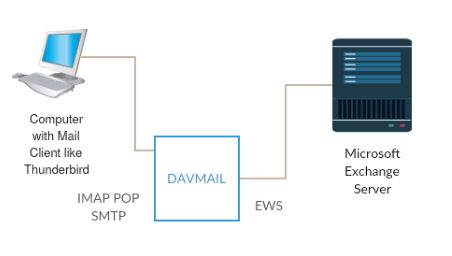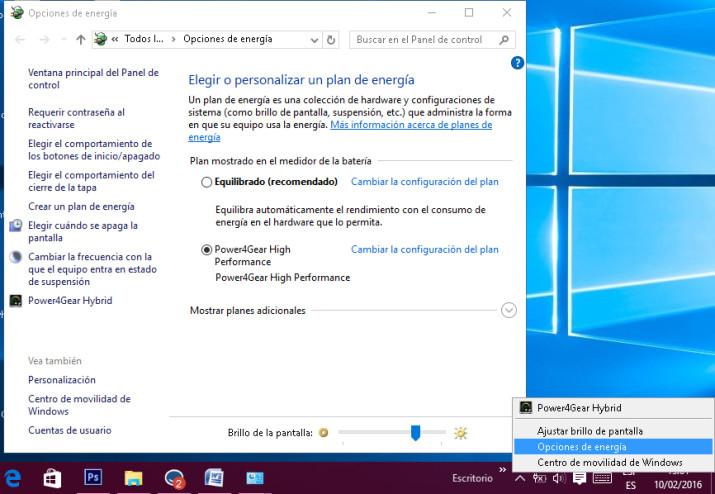

- #WINDOWS 10 DAVMAIL OUTLOOK FOR MAC#
- #WINDOWS 10 DAVMAIL OUTLOOK UPGRADE#
- #WINDOWS 10 DAVMAIL OUTLOOK SOFTWARE#
- #WINDOWS 10 DAVMAIL OUTLOOK WINDOWS#
How did you get LDAP searches to work in Outlook? I did exactly what you did and yet I still cannot get Outlook to return any meaningful results.Īny tip to get it working would be most appreciated. LDAP searches work fine in AddressBook using either a CardDAV account or an LDAP account, but I just can’t get it to work in Outlook. The server may be down, overloaded, or there may be too much net traffic.” Outlook will keep complaining that “An operation on the server timed out. There is one other annoying issue that poses a problem if your mailbox is huge like mine (I have over 7K messages). I’ve tried everything but can’t get Outlook to return searches on LDAP directories. However, the search will return “No matches found for xxx” where xxx stands in for the individual being searched for. You’re right about getting the error: ASN-1 received tag -121 (expected tag 4). I got DAVMail configured and working for everything except LDAP lookup in Outlook. Hope this can save you some time finding everything out yourself… This was not a problem with Emailchemy, but it is a bug in Outlook 2011. All mails directly under the root of the. Do make sure however that everything you want to enter is in a subfolder of the. pst files from Windows, without using Emailchemy. With Outlook 2011, you can now directly import.
#WINDOWS 10 DAVMAIL OUTLOOK SOFTWARE#
Besides avoiding some hassle, it gives you a better feeling about having spent too much money on another half working Microsoft software package… I use Apple Mail only for MobileMe and other internet accessible mails, and Outlook for Exchange which is only accessible through intranet. But if you spent the money on Office 2011 anyway, there is one advantage to separating them. Now you could rightfully argue that then you might just as well also use Apple’s Mail using IMAP access to your Exchange mail through DavMail, which works perfectly as well. What you can do however is use Apple’s iCal to connect to the Exchange calendar through DavMail, and Apple’s Address book to connect to Exchange LDAP through DavMail. This should do the job, but there is a bug leading to the following error message each time you connect to the Exchange LDAP server: “DavMail encountered error: ASN-1 received tag -121 (expected tag 4).


You should now be able to see your mail folders, and to send and retrieve mail.Ĭalendar support is not possible in Outlook 2011, since it does not support CalDav yet (what a shame!).Start DavMail if you already stopped it.Connect to your company network, directly or using VPN.Untick “Use SSL to connect” under both incoming and outgoing server.Under outgoing server, tick “override default port” and enter 1025 as port number (see DavMail settings). As outgoing server, enter “localhost”.Under incoming server, tick “override default port” and enter 1143 as port number (see DavMail settings). As incoming server, enter “localhost”.Enter your personal data: as e-mail address, yourdomainname\yourusername as username and your password.Create a new IMAP (not Exchange!) account. In Outlook 2011,enter Outlook>Preferences and go to the Accounts section.
#WINDOWS 10 DAVMAIL OUTLOOK WINDOWS#
Ask your IT administrator or look into your Outlook settings under Windows for the exact URL in your particular case.
#WINDOWS 10 DAVMAIL OUTLOOK FOR MAC#
Download and install DavMail for Mac OS/X on your Mac.Just Google “DavMail Mac binary download” to find the nearest/latest available download location. There is a way around this though, using a freely downloadable and open source software called DavMail. But then again, also Apple excluded direct Exchange 2003 support in Mail and iCal on OS/X 10.6 Snow Leopard. Official reason is that Exchange 2003 is too old, which is of course a weak justification considering that even the latest iOS 4.2 for iPhone/iPod and iPad do support Exchange 2003.
#WINDOWS 10 DAVMAIL OUTLOOK UPGRADE#
Unfortunately, Microsoft excluded support for Exchange 2003 in its major upgrade of Office 2011 for Mac.


 0 kommentar(er)
0 kommentar(er)
